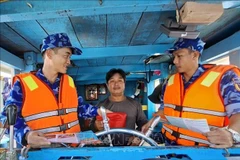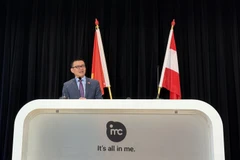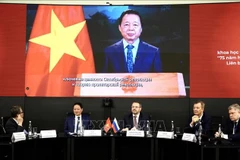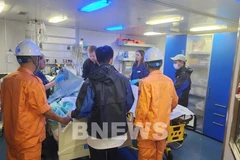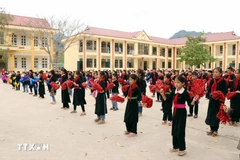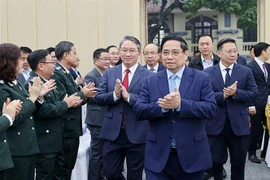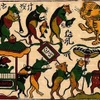Vietnam’s poverty rate reduced from 22percent in 2005 to 9.45 percent in 2010, exceeding the target of 10percent set by the National Assembly.
This achievement wasrecorded after the five-year implementation of the National ObjectivesProgramme on poverty reduction during 2005 and 2010.
Speaking at aworkshop on sustainable poverty reduction orientations for the period2011-2020 in Hanoi on November 30, Deputy Minister of Labour, WarInvalids and Social Affairs (MoLISA) Nguyen Trong Dam said that with anannual reduction of 2-3 percent from 2005 to 2010, poor people havegained better access to economic resources and basic social servicessuch as education, healthcare, clean water and legal assistance.
Theinfrastructural facilities in many poor communes and districts havebeen upgraded whilst the living conditions of the poor have also beenimproved, he added.
According to the Deputy Minister, thoughimportant achievements recognised by the international community, thecountry’s poverty reduction outcomes are not really sustainable and thegap between the rich and the poor is expanding.
In addition,there are still many challenges to implementing poverty reductionobjectives such as risks from the international economic integration andthe impacts of climate change, he noted.
In order to improve theefficiency of poverty reduction work, the MoLISA has submitted to theGovernment a resolution on sustainable poverty reduction orientationsfor the 2011-2020 period.
The resolution, drawn up with thesupport from the United Nations Development Programme (UNDP), sets agoal of reducing the rate of poor households in the country from 15-17percent to 4-5 percent in 2020 (under the new poverty line expected tobe applied from 2011).
According to the MoLISA’s new povertystandards, households with an average monthly per capita income equal orless than 400,000 VND in rural areas and 500,000 VND in urban areaswill be deemed poor. The current respective figures are 200,000 VND and260,000 VND.
To reach this goal, besides implementing directsupport mechanisms and policies such as preferential credit for poorhouseholds, free vocational training and job generation, educational andhealth services, the resolution also includes a national programme ofobjectives on poverty reduction for the 2011-2015 period. Priority isgiven to the most disadvantaged areas, including the northernmountainous region, the Central Highlands, the southwestern region,coastal areas, islands and areas inhabited by ethnic minority people.
Therepresentatives from international organisations who were present atthe workshop, including the ActionAid, the World Bank (WB), Oxfam (UK)and the European Union applauded the resolution and agreed that theintroduction of poverty reduction programmes needs the involvement ofthe public as well as increased supervision and monitoring byorganisations.
They also suggested an annual auditing mechanism and a system to receive feedback from people./.





